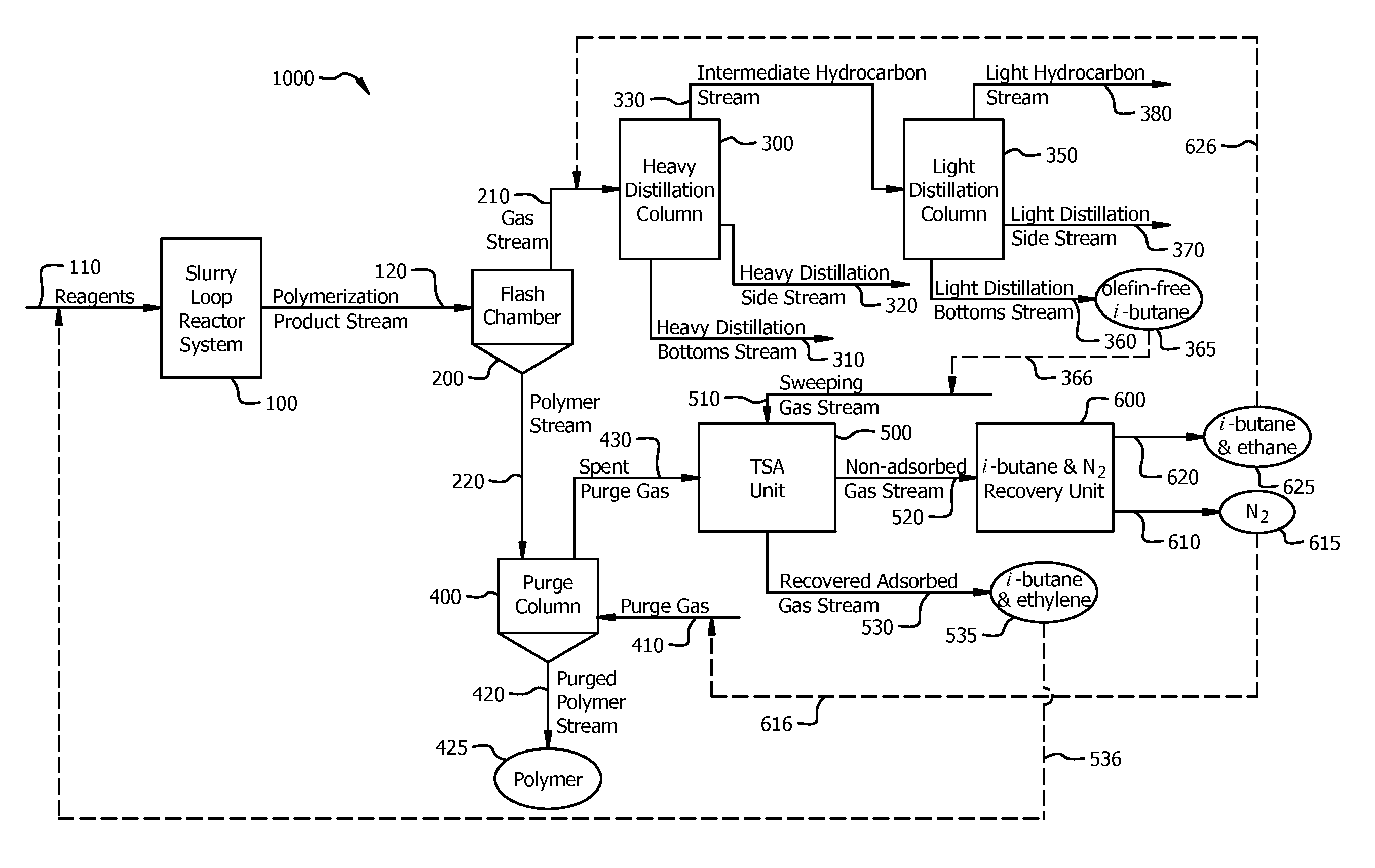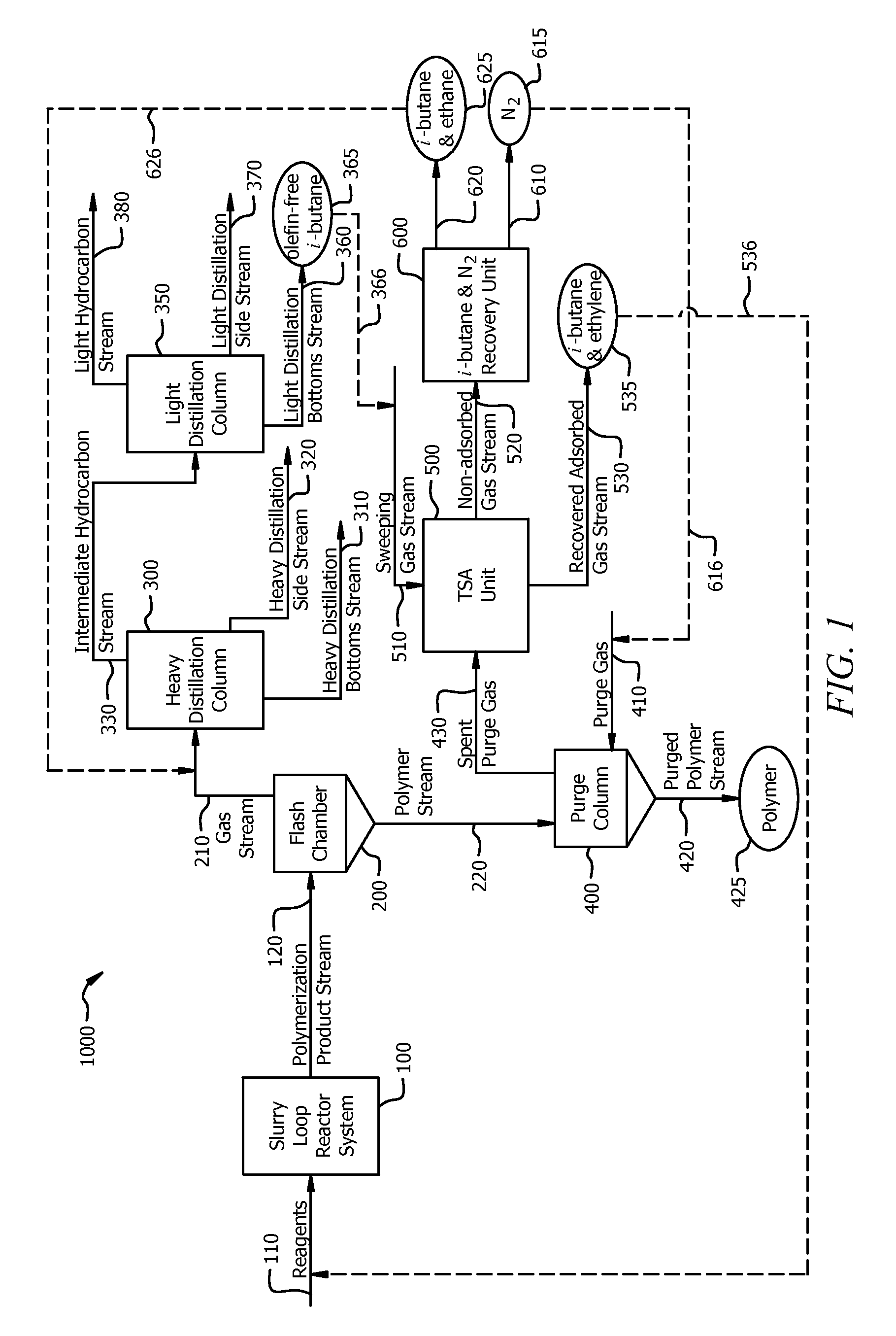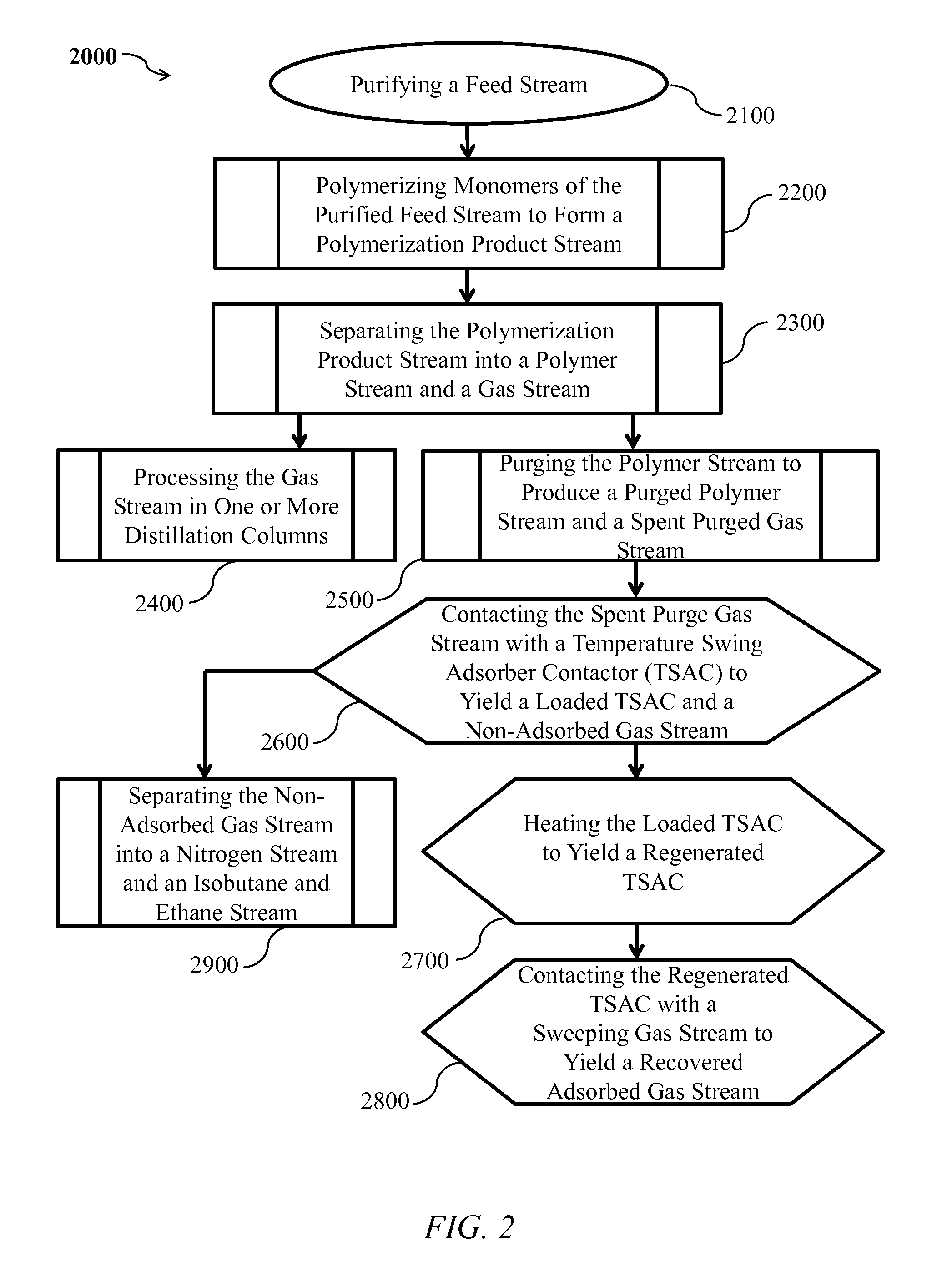Ethylene separation with temperature swing adsorption
a technology of adsorption and ethylene, which is applied in the direction of separation process, chemical/physical/physical-chemical process, organic chemistry, etc., can solve the problems of energy cost associated with feedstock purification, significant proportion of the total cost of the production of such polymers, and significant portion of the associated capital cost. , to achieve the effect of avoiding energy-consuming and expensive processes, and avoiding energy-consuming and labor-intensive processes
- Summary
- Abstract
- Description
- Claims
- Application Information
AI Technical Summary
Benefits of technology
Problems solved by technology
Method used
Image
Examples
first embodiment
[0200]A first embodiment which is a process for component separation in a polymer production system, comprising (a) separating a polymerization product stream into a gas stream and a polymer stream, wherein the polymer stream comprises polyethylene, ethylene and ethane; (b) contacting at least a portion of the polymer stream with a purge gas to yield a purged polymer stream and a spent purge gas stream, wherein the purged polymer stream comprises polyethylene, and wherein the spent purge gas comprises purge gas, ethylene, and ethane; (c) contacting at least a portion of the spent purge gas stream with a temperature swing adsorber contactor (TSAC) to yield a loaded TSAC and a non-adsorbed gas stream, wherein at least a portion of the ethylene is adsorbed by the TSAC at a first temperature to yield TSAC-adsorbed ethylene, wherein a portion of the ethane is adsorbed by the TSAC at the first temperature to yield TSAC-adsorbed ethane, and wherein the loaded TSAC comprises TSAC-adsorbed e...
fourth embodiment
[0223]A twenty-fourth embodiment which is the process of the twentieth embodiment wherein the TSAC further comprises a support.
[0224]A twenty-fifth embodiment which is the process of any of the twentieth through twenty-fourth embodiments wherein the hydrocarbon adsorber contacts at least a portion of the support, is distributed throughout the support, or combinations thereof.
[0225]A twenty-sixth embodiment which is the process of any of the twenty-fourth through twenty-fifth embodiments wherein the support comprises a film, a foil, a mesh, a fiber cloth, a fiber cloth, a woven fiber mesh, a woven wire mesh, a metallic woven wire mesh, a polymeric membrane, a surface treated material, a surface treated metal foil, a woven fiber cloth, or combinations thereof.
[0226]A twenty-seventh embodiment which is the process of any of the twenty-fourth through twenty-sixth embodiments wherein the support comprises a thermally conductive polymer.
[0227]A twenty-eighth embodiment which is the proces...
sixth embodiment
[0235]A thirty-sixth embodiment which is a process for component separation in a polymer production system, comprising (a) separating a polymerization product stream into a gas stream and a polymer stream, wherein the polymer stream comprises polyethylene, ethylene and ethane; (b) contacting at least a portion of the polymer stream with nitrogen to yield a purged polymer stream and a spent purge gas stream, wherein the purged polymer stream comprises polyethylene, and wherein the spent purge gas comprises nitrogen, ethylene, and ethane, wherein a pressure of the spent purge gas stream is from about 100 kPa to about 150 kPa, wherein ethylene is characterized by a partial pressure of less than about 10 kPa, and wherein ethane is characterized by a partial pressure of less than about 5 kPa; (c) contacting at least a portion of the spent purge gas stream with a temperature swing adsorber contactor (TSAC) comprising a 4 A zeolite and a plurality of hollow tubes at about 20° C. to yield a...
PUM
| Property | Measurement | Unit |
|---|---|---|
| Temperature | aaaaa | aaaaa |
| Time | aaaaa | aaaaa |
| Time | aaaaa | aaaaa |
Abstract
Description
Claims
Application Information
 Login to View More
Login to View More - R&D
- Intellectual Property
- Life Sciences
- Materials
- Tech Scout
- Unparalleled Data Quality
- Higher Quality Content
- 60% Fewer Hallucinations
Browse by: Latest US Patents, China's latest patents, Technical Efficacy Thesaurus, Application Domain, Technology Topic, Popular Technical Reports.
© 2025 PatSnap. All rights reserved.Legal|Privacy policy|Modern Slavery Act Transparency Statement|Sitemap|About US| Contact US: help@patsnap.com



